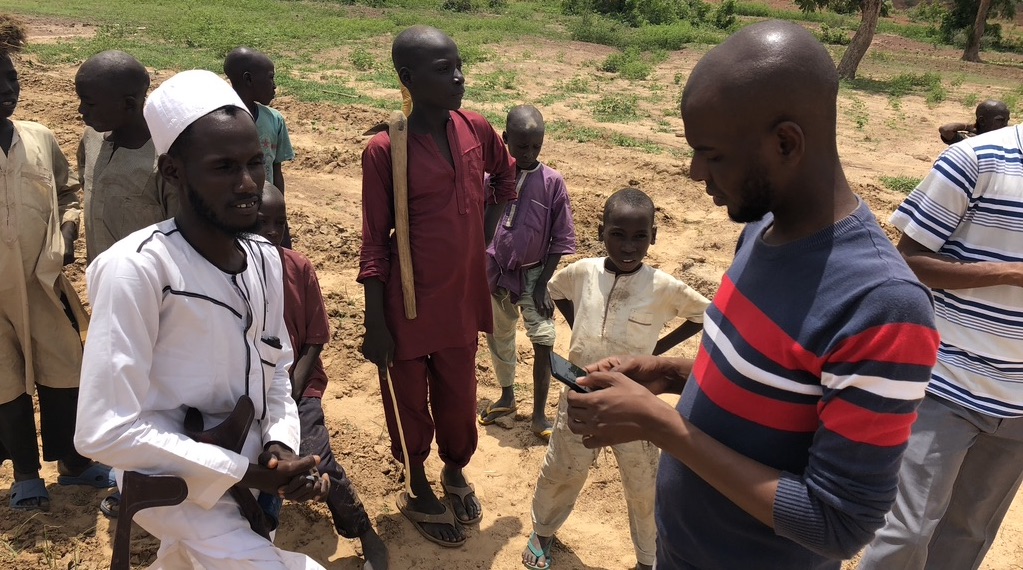An Evidence-Based Approach to Increase Farmer Incomes
Abstract
A new startup is scaling up a proven innovative approach that provides bridge loans and storage bags to farmers to increase incomes
Researchers working with IPA found that loan offers allowed farmers to store more maize and earn slightly higher revenues in Kenya. A new startup nonprofit organization, Taimaka, used these results to design and launch its agricultural program in northern Nigeria, providing bridge loans and storage bags to farmers. They plan to scale the approach to reach 500 farmers in 2020 and to more than 1,000 farmers in the coming years.

The Challenge
Seasonal fluctuations in crop prices can have direct impacts on farmers’ earnings and savings. Crop prices are often lowest right after harvest, increasing substantially in the months afterwards. For example, in East Africa, over the six to eight months following harvest, maize prices may increase as much as 50 percent. But farmers do not always take advantage of these prices. Even with opportunities to store crops, farmers often sell their maize at low prices immediately after harvest to obtain cash for urgent expenditures and bills, buying it back later in the season at higher prices after exhausting their own harvests. One potential explanation for this is that farmers have poor access to credit or savings, with few opportunities to secure cash besides crop sales. Improved access to credit could benefit farmers, yet credit is relatively expensive and inflexible compared to savings. Savings products could help farmers accumulate cash, but farmers may find it difficult to save due to competing uses for their money and demands from family or friends. Can loans secured by harvests help farmers access loans and boost income?
The Evidence
From 2011-2018, IPA conducted a randomized evaluation, led by researchers Marshall Burke, Lauren Falcao Bergquist, and Ted Miguel, to test whether well-timed access to credit allows maize farmers to make better use of storage and sell their output at higher prices.
The study1 found that the loan offers allowed farmers to store more maize and earn more revenue on average. Borrowers used the loan to finance immediate household needs and buy maize for consumption when prices were low. Farmers offered this loan in October, immediately after harvest, reaped higher returns—more immediate access to cash allowed them to hold onto more maize inventory compared to farmers offered the loan three months later (who had by then needed to sell off some of their maize at less-high prices). Local farmers who did not receive the post-harvest loan also benefited. By spreading out the timing of maize sales, maize prices at harvest increased, benefiting farmers who continued to sell their crops immediately after harvest.
The Impact
A startup nonprofit organization, Taimaka, used these results to design and launch its agricultural program in northern Nigeria. The organization, which began piloting its program in 2019, is providing bridge loans and storage bags to farmers. Taimaka has conducted a proof-of-concept pilot, lending to 50 farmers within their first cohort of 100 farmers surveyed to understand crop selling patterns in Gombe state and are working to scale the approach to engage 500 farmers in 2020. They aim to offer an analogous post-harvest loan with PICS bags to more than 1,000 farmers in the coming years. Their commitment to evidence-based implementation and impact is evident in their goal to increase farmers' income by at least 20 percent, which they intend to track carefully through monitoring systems and a future impact evaluation in their context (see taimaka.org for details).
Sources
1. Burke, Marshall, Lauren Falcao Bergquist, and Edward Miguel. "Sell low and buy high: arbitrage and local price effects in Kenyan markets." The Quarterly Journal of Economics 134, no. 2 (2019): 785-842.












